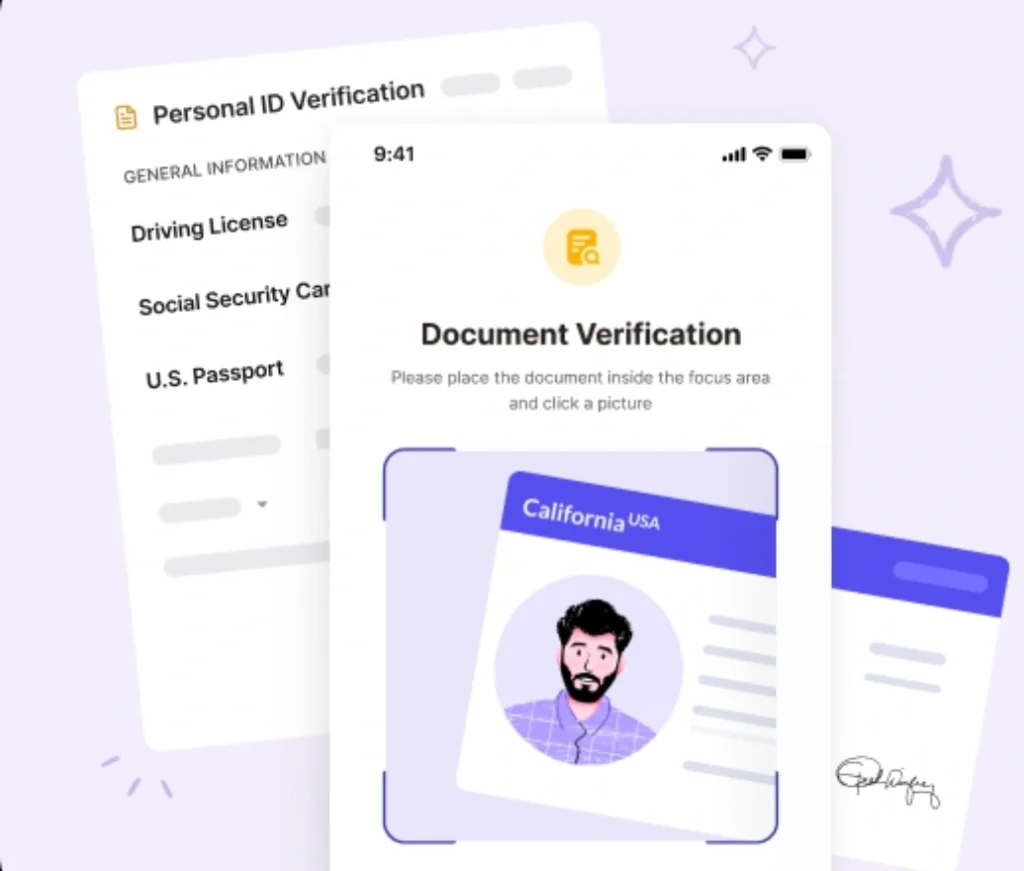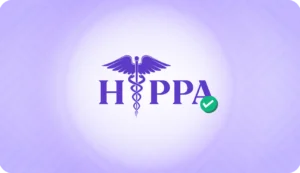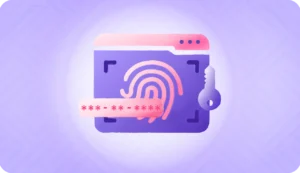Health Insurance Portability and Accountability Act (HIPAA) verification is absolutely essential in today’s healthcare landscape. It ensures that sensitive patient data—known as Protected Health Information (PHI)—remains secure. At the same time, it makes sure that the data is accessible to authorized individuals. Be it patient care or compliance, healthcare providers must balance security and access. This maintains the trust of both patients and regulatory bodies.
Non-compliance can also lead to severe legal consequences. More importantly, it jeopardizes patient privacy. In this guide, we’ll explore HIPAA verification methods and the best practices. We’ll also look at future healthcare innovations that can ensure both compliance and trust.
Understanding HIPAA and PHI
Mastering HIPAA and the management of Protected Health Information (PHI) is vital to prevent data breaches, uphold patient trust, and ensure legal compliance in today’s healthcare landscape.
The HIPAA privacy rule
The federal regulation established under HIPAA to safeguard patient privacy is known as the HIPAA privacy rule. It sets national standards for the protection of PHI and applies to all healthcare providers, health plans, and other covered entities. It also establishes guidelines on how patient information should be handled and shared. The HIPAA security rule focuses on how to prevent unauthorized access or disclosure.
Definition of PHI
PHI refers to any information in a medical record that can be used to identify an individual. This includes medical history, test results and insurance information. It can even entail discussions between healthcare providers. Examples include:
- Names and addresses
- Medical records
- Billing information
Importance of secure access control
Access to PHI requires secure verification methods to prevent unauthorized access. They ensure that only patients, healthcare providers, and patient’s legally authorized representatives can request access to sensitive information. Lack of proper safeguards can compromise both patient privacy and regulatory compliance.
HIPAA verification requirements
Although companies can modify the HIPAA verification procedure to suit their needs, it should vary depending on the requestor and how they make their PHI request.
Verification for different requesters
HIPAA privacy rule requires different verification methods for individuals to request access to PHI. For example, patients, authorized representatives, and law enforcement may need different levels of authentication to access the data. Healthcare providers need to install flexible and secure methods to manage these varying requests.
Balancing security and accessibility
While the HIPAA privacy rule enforces strict regulations, healthcare providers must also provide timely access to PHI for legitimate requesters. Striking a balance between robust security and quick accessibility is crucial. It avoids bottlenecks that could impact patient care.
Reasonable verification methods
HIPAA compliance outlines the need for “reasonable verification” before obtaining access to PHI. This can include a combination of methods like identity verification with ID proof, personal information, or using advanced authentication technology. The key to HIPAA security rule is to apply the appropriate method depending on the requester’s relationship to the patient.
Common methods for HIPAA verification
HIPAA verification relies on a mix of identity checks, secure authentication, and real-time monitoring to safeguard patient data. Here are some common authentication methods:

Knowledge-Based Verification (KBA)
KBA is a common method used to confirm a person’s identity. They are asked specific, personal questions that only they would know the answers to. These questions often revolve around past experiences or private information. For example, KBA may ask about:
- Patient’s medical record, previous appointments or treatments
- The name of a doctor they’ve visited
- Past insurance claims or billing details
- The name of a healthcare facility they’ve used
- Certain elements from their medical history
KBA is frequently used in online portals, call centers, and digital systems. It’s prevalent where face-to-face identity verification isn’t workable. It leverages the fact that personal knowledge is unique to the individual. Thus helping to ensure that the person requesting access is who they claim to be.
Yet, KBA does have its limitations. KBA’s security can sometimes be compromised. Especially when an increasing amount of personal information is available through data breaches, social media, or public records. If bad actors request access to publicly available data or stolen information, they may be able to answer some KBA questions.
This is why KBA is often supplemented with other verification methods. Methods like Multi-Factor Authentication (MFA) enhance security.
Multi-Factor Authentication (MFA)
MFA adds an extra layer of protection. They need the individual to provide many forms of identification before obtaining access to sensitive information, such as PHI. MFA typically combines at least two of the following elements:
- Something you know: This could be a password, an answer to a security question, or KBA questions (as discussed earlier).
- Something you have: This might be a smartphone or a physical device that can receive a one-time passcode (OTP). For instance, after entering a password, the individual receives a unique code via text message or email. Entering the code will complete the verification process.
- Something you are: This refers to biometric information. Fingerprints, facial recognition, or voiceprints, which are unique to the individual.
The advantage of MFA is that it makes it significantly harder for unauthorized individuals to request access to PHI. Even if they have obtained one form of identification (like a password). If a hacker gets hold of a patient’s password, they still won’t be able to access the system. They’ll need to enter the one-time code sent to the patient’s device or bypass the biometric check.
MFA can be seamlessly integrated into both digital platforms (such as patient portals) and physical security systems within healthcare facilities. While MFA does improve security significantly, it’s essential for healthcare organizations to ensure the process is user-friendly. It should never become a barrier to patients accessing their information.
Biometric authentication
Biometric authentication is one of the most secure forms of identity verification. It uses unique biological traits to confirm an individual’s identity. Biometric data is unique to each person and difficult to forge. Thus offering a highly effective way to protect access to PHI.
Common types of biometric authentication include:
- Fingerprint scanning: Fingerprint scanning is often used on smartphones. They compare the scanned fingerprint against a stored image in the system. It’s widely adopted because of its ease of use and accuracy.
- Facial recognition: This method analyzes the unique structure of a person’s face. It uses algorithms that map their facial features. Facial recognition is increasingly used in healthcare systems. Especially as part of digital or mobile-based identity verification processes.
- Voice recognition: Voice recognition analyzes the unique patterns and characteristics of a person’s voice. This method can be particularly useful for remote identity verification over the phone. Thus adding extra security to patient interactions with healthcare call centers.
- Retina or iris scans: These methods capture the unique patterns in the retina or iris of the individual’s eye. They offer a highly secure but more expensive form of biometric verification. Although not as common as fingerprints or facial recognition, they are among the most accurate biometric techniques.
Biometric authentication is particularly valuable for healthcare organizations. Especially those in high-security environments or for remote patients accessing healthcare services digitally. Biometrics cannot be lost, stolen, or shared. This reduces the risk of fraudulent access to sensitive patient data.
But, as with all technologies, there are concerns. Especially related to privacy and the storage of biometric data. Healthcare providers must ensure that this information is securely stored. To avoid potential breaches, they must be HIPAA compliant.
Combining KBA, MFA, and biometrics for optimal security
Healthcare organizations often combine KBA, MFA, and biometric authentication. They do this to achieve optimal security and ensure HIPAA compliance. By using these methods in tandem, organizations can create a layered defense against unauthorized access. For example, a patient accessing their PHI through a mobile app might be required to:
- Answer KBA questions related to their medical history.
- Enter a One-Time Passcode (OTP) sent to their phone (MFA).
- Use their fingerprint or face to confirm their identity (biometric authentication).
Each layer adds complexity for potential bad actors. They also ensure that legitimate patients or representatives access their data securely. The best way to do this is to employ a compliance tool with proper security measures and encryption so that healthcare businesses don’t have to spend time taking care of security and compliance.
Best practices for HIPAA verification
To maintain top-notch security, here are essential tips to strengthen your HIPAA verification process:
Develop clear policies and procedures
Healthcare providers should develop documented policies and procedures that staff can follow. This ensures consistency in the verification process. These policies should outline the steps required for verifying different types of requesters. They should ensure they’re HIPAA compliant while maintaining operational efficiency.
User training and education
Proper training is essential to avoid errors in HIPAA verification. Employees should be educated on the latest regulations and tools to correctly verify identities. This will minimize the risk of data breaches. Continuous education also ensures staff remain up to date with evolving security practices.
Leverage technology solutions
Secure identity verification software like HyperVerge’s solutions, can streamline the HIPAA verification process. Automating parts of the process with tools like MFA and biometrics can be quite handy. It can reduce manual errors, improve efficiency, and enhance overall security. Explore advanced solutions offered by Hyperverge’s HIPAA compliant verification systems.
Maintain audit trails
To maintain HIPAA compliance, healthcare organizations must keep a record of all verification attempts. Audit trails help verify that the correct processes were followed in case of disputes or audits. Thus offering proof of compliance with regulatory requirements.
Ensure patient data security
with HyperVerge’s seamless HIPAA verification solutions Schedule a DemoThe future of HIPAA verification: security and innovation
The future of HIPAA verification lies in leveraging cutting-edge technologies that are set to revolutionize both security and efficiency.
Emerging technologies
New technologies like blockchain and voice recognition are poised to transform HIPAA verification. Blockchain offers decentralized, tamper-proof records of verification attempts. Voice recognition can provide seamless and secure access for patients over the phone. These innovations promise to enhance both security and convenience in the healthcare sector.
Balancing security with user experience
As security measures grow stronger, it’s important not to sacrifice user experience. For example, while MFA adds security, it should be designed to be user-friendly and quick. The goal is to offer robust protection while minimizing friction for legitimate users.
Final Thoughts
HIPAA verification plays a critical role in safeguarding patient privacy and ensuring regulatory compliance. Healthcare providers can secure access to PHI while helping authorized individuals. The key is using a combination of KBA, MFA, biometric authentication, and adopting best practices like user training and maintaining audit trails,
Healthcare providers must prioritize HIPAA compliance by adopting reliable verification solutions like HyperVerge’s secure authentication systems. These solutions ensure both compliance and operational efficiency. Thus protecting sensitive patient data in today’s digital healthcare landscape.
FAQs
1. What does HIPAA mean?
HIPAA stands for the Health Insurance Portability and Accountability Act. It’s a law designed to protect the privacy and security of patient health information.
2. What is HIPAA in testing?
HIPAA in testing refers to ensuring that clinical and diagnostic testing practices follow HIPAA’s privacy and security rules.
3. What is the HIPAA authentication rule?
The HIPAA authentication rule requires healthcare providers to verify the identity of individuals before granting access to PHI.
4. What is a HIPAA authorization form?
A HIPAA authorization form is a document that a patient must sign to allow the release of their PHI to specific individuals or organizations.





